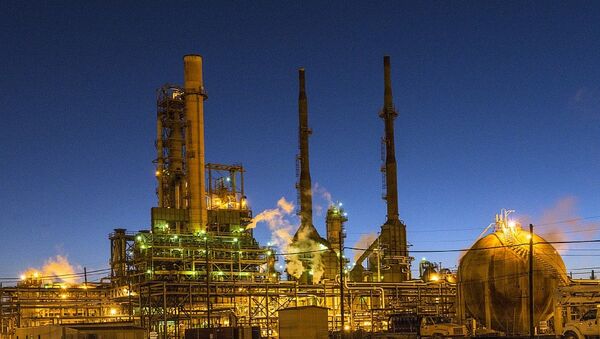The oil prices have been on a steady rise since June 2017 and are approaching the $80 per barrel mark, with Brent Crude hitting $79.84 on May 23.
'Geopolitics Dominating Market Again'
According to assessments by Bank of America Merrill Lynch, the US withdrawal from the Joint Comprehensive Plan of Action (JCPOA), also known as Iran deal, decreasing oil output in Venezuela and the OPEC+ agreement will drive the oil prices even further in 2019, with the possibility of reaching $100 per barrel.
READ MORE: Bank of America Predicts Oil to Hit $100 per Barrel in 2019
Goldman Sachs Group Inc. agrees that these factors will affect oil prices, but suggests that Brent futures could reach $82.50 per barrel by summer, but are likely to decline again in 2019. The CEO of French oil giant Total, Patrick Pouyanne, also expressed his opinion that $100 for a barrel won't come as a surprise, noting that the world has entered "a new world […] where geopolitics are dominating the market again."
US President Donald Trump announced on May 8 Washington's withdrawal from the JCPOA, a deal that was reached in order to secure the peaceful nature of the Iranian nuclear program in exchange for lifting sanctions. The US is planning on re-imposing sanctions against Iran and against any company that does business with the country.
READ MORE: Drop in Venezuela's Oil Production Beneficial for Mexico — Pemex CEO
Venezuela has been reducing its oil output in recent months amid an ongoing economic crisis and US sanctions against Caracas. Its president, Nicolas Maduro, announced the release of a state-backed cryptocurrency, the Petro, aimed at helping the country sell its oil and to circumvent sanctions.
OPEC+ Policy
The OPEC+ agreement to decrease oil production has been in effect for 1.5 years and has managed to raise the oil prices after taking a nosedive in 2014. It is so far unclear whether the agreement will be adapted to the new reality, where oil prices have almost reached the $80 mark. During a meeting in April, OPEC members announced that the countries intend to maintain the production cap until the end of 2018. However, the CEOs of Russia's Lukoil and Gazprom have recently expressed their opinion at the Economic Forum in St. Petersburg that with such oil prices, it is time to make the OPEC+ agreement more flexible.
READ MORE: Caracas Slams New US Anti-Venezuela Sanctions as 'Crime Against Humanity'
OPEC countries, along with Russia and 10 other non-members (OPEC+), agreed on production cuts in September 2016 in a bid to raise oil prices to the pre-2014 level. The agreement was prolonged in December 2017 for one year.
Risks of "$100 per Barrel"
Analysts at Switzerland's UBS Bank have already drawn a picture of world oil prices reaching $100 per barrel. According to them, such a sharp rise in prices will result in the global economy loosing 16 basis points of growth, which is equivalent to $100 billion. Besides, the analysts believe that the current trend in oil prices may mark the beginning of a new recession in the US.
"We should take seriously the possibility of an oil price spike — not least because oil spikes preceded 5 of the last 6 recessions [in the US]," the UBS report says.
The report notes that the current spike is only the 11th sharpest in the history of oil prices, but adds that this could change at any moment.

